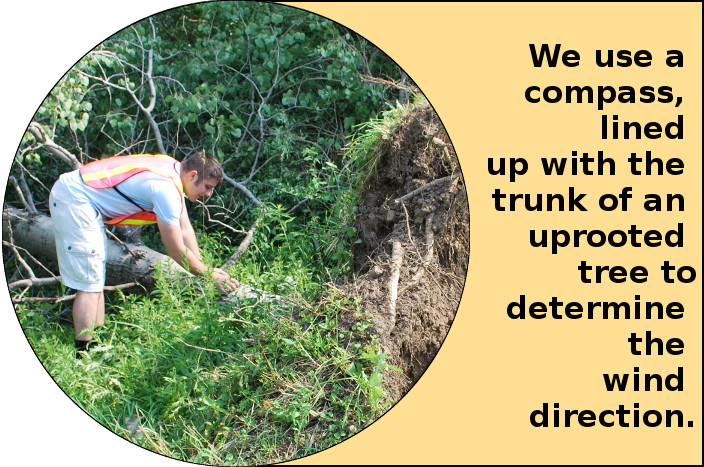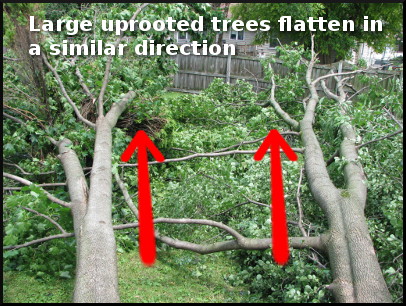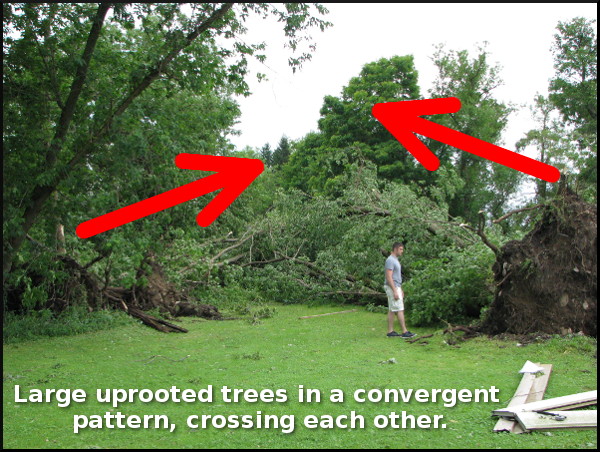What do we do on these storm surveys?
How we Determine a Microburst?
|

- The pattern of damage determines if it was a tornado. NOT how much damage was caused.
- Microburst damage often looks laid or flattened out. Larger uprooted trees point in the same direction, or a fan shaped dirvergent pattern.
- Microburst can have wind speeds as high as 100 mph.
- We conduct surverys to find out exactly what happened. This helps us to improve our warnings for the future. This is also important for historical reference.
- We use a compass, lined up with the trunk of an uprooted tree to determine the wind direction.
|

How do we Determine a Tornado?
- The pattern of damage determines if it was a tornado. NOT how much damage was caused.
- Tornado damage often has a chaotic appearance, with larger uprooted trees often crossing each other.
- We often look at larger uproots of trees to get a true idea of where the wind was blowing from. Smaller branches/snapped trees are not as helpful, as they may fail based on the tree itself and now where the wind was coming from.
- Large uprooted trees in a convergent pattern, crossing each other.
- Especially in our area, tornadoes AND microbursts can cause the same amount of damage.
- We conduct surverys to find out exactly what happened. This helps us to improve our warnings for the future. This is also important for historical reference.

Additional Information:

